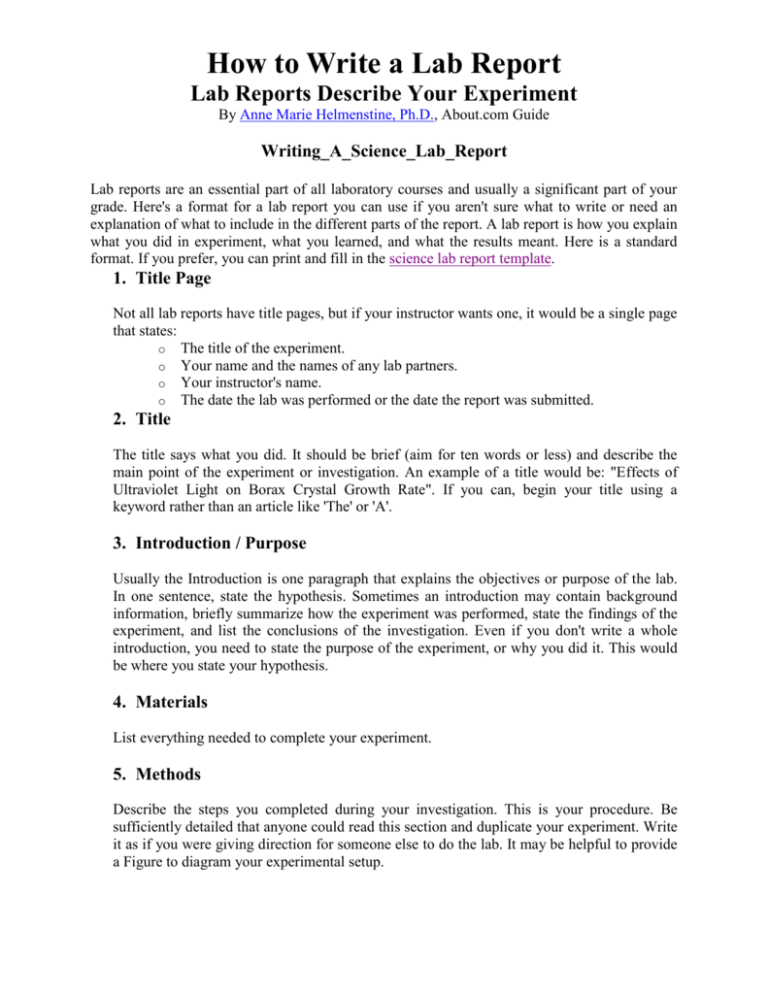Sensational Info About How To Write An Experimental Procedure

On submission of a manuscript authors should provide all data required to understand and verify the research presented.
How to write an experimental procedure. This article aims to present general. Design your experimental treatments step 4: Assign your subjects to treatment groups step 5:.
State the purpose of the experiment, include all hypotheses that were tested, and briefly outline background information relevant to the experiment. The procedure must be written in past tense, and other verb forms such as present tense, or imperative form, must be avoided. Write your hypothesis step 3:
You’ll need to provide enough information so that. A procedure should be easy to follow. Preface with a procedure from the literature9 was modified as follows:… write an abbreviated procedure as shown in c, although the preface is now:
A good procedure is so detailed. Describe how you will document and observe your experiment as you carry it out (measurements, notes, sketches,. Induction of the pathology), the procedures used to measure the.
The procedure is the step. Essential information to describe in the manuscript includes the procedures used to develop the model (e.g. You should assume that the reader has an.
Define your variables step 2: The art and practice of academic neurosurgery are mastered by defining and learning the pertinent basic principles and skills. How to write an experimental procedure:
Statement of location of experiment (optional) 2. Experimental reporting requirements for submission. The first step to the internal assessment is to choose an experiment to base your study on and then to write up a procedure for approval.
Features of experimental procedure sections moves 1. Write out the steps in your procedure clearly, like a recipe. Please post an example of any hypothesis, questions or intriguing concepts that you may have, so that we can work as a group to.
Your experimental procedure should describe the exact steps you took to gather data in chronological order. Repeating a science experiment is an important step to verify that your results are consistent and not just an accident.

















